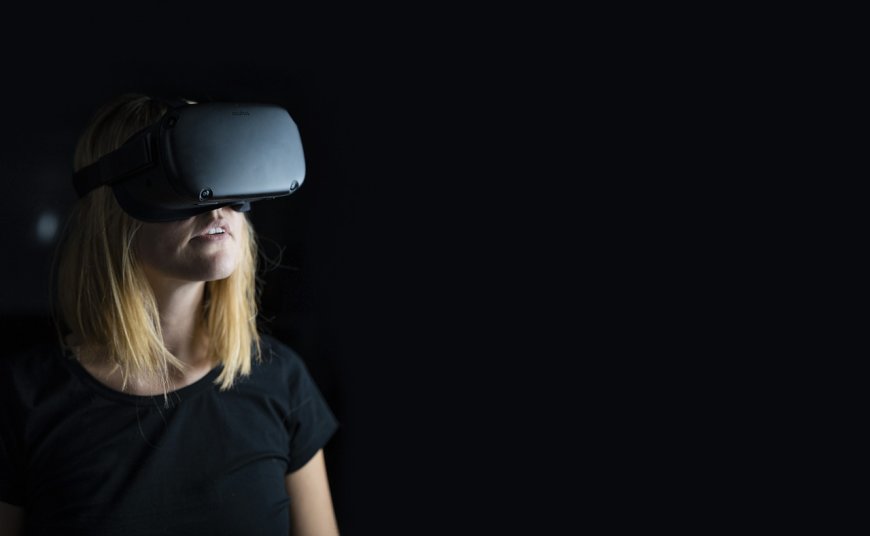VIRTUAL REALITY METHOD IN PSYCHOLOGY
Communication in today's technology is not limited to face-to-face interactions but has also begun to take place in virtual environments. As in many fields, the effects of technology are observed in psychology, and its most significant impact is the opportunity to conduct therapy in virtual environments. However, the use of virtual reality goes beyond this. In this study, in addition to its significant impact, we will discuss the relatively new technology recently incorporated into psychology, which is virtual reality.

What is Virtual Reality?
The concept of virtual reality, being a constantly evolving field, has expanded its scope to include psychology. The fundamental goal of virtual reality is to eliminate barriers between humans and machines and to provide access to challenging environments through a few machines more quickly and economically. Some other areas where virtual reality is used include electronics and mechanical engineering, simulations used in aviation and the military, and fields such as human anatomy.
Contributions of Virtual Reality to the Field of Psychology
One of the most significant factors that enable the adaptation of virtual reality to the field of psychology is the research showing that movements in a virtual environment have almost the same effect on the brain as movements in the real world. The contributions of virtual reality to the field of psychology include providing access to environments that are physically or economically challenging within a therapy room, preserving privacy in issues where the client may feel uncomfortable, and showing whether the client implements the therapist's advice as it should be.
Application Areas of Virtual Reality in Psychology
The primary areas where virtual reality, as part of cognitive-behavioral therapy, is used include:
Phobias
The exposure method, the most commonly used method in treating various phobias, has become more accessible and controlled through virtual reality. For example, exposing someone with a fear of flying to an airplane during a session would be challenging and costly, but with virtual reality methods (virtual reality glasses, simulations, etc.), the person can be exposed to their fear without leaving the therapy room. Since exposure is under the therapist's control, it will be more effective and can be increased or decreased at the necessary points, ensuring it is done correctly.
Psychoeducation
For instance, we cannot know whether a client who has received sleep hygiene education applies it correctly at home, but in the therapy room, under the therapist's control, through a virtual reality method, the client who has received the training can be placed in situations where mistakes can be witnessed firsthand.
Post-Traumatic Stress Disorder (PTSD)
Another area where virtual reality is used is post-traumatic stress disorder. The goal is to help individuals exposed to trauma that is impossible or unethical to recreate overcome it.
Obsessive-Compulsive Disorders (OCD)
Virtual reality is also used in the treatment of obsessive-compulsive disorders. For example, an individual with a cleaning obsession can be placed in a contaminated environment with the virtual reality method in the therapy room, and behaviors performed by the individual without awareness (such as not being able to touch the cloth used to clean again) can be observed.
Limitations of Virtual Reality in Psychology
Although virtual reality is an effective method, it is not yet widely used enough to reach a general conclusion about its application in research. Additionally, research is mostly conducted in the West, so it would be incorrect to generalize the results. Another limitation is the age limit; most studies include participants over 18, and the results cannot be generalized to every age group. However, it is possible to say that all these limitations will be overcome with the increasing application of virtual reality over time.
References:
Paul M, Bullock K, Bailenson J. Virtual reality behavioral activation as an intervention for
major depressive disorder: case report. JMIR Ment Health 2020; vol.7
Kurbanoğlu SS. Sanal gerçeklik: gerçek mi değil mi? Türk Kütüphaneciliği 10,1 (1996),
21-31.
Zheng JM, Chan KW, Gibson I. Virtual reality: a real world review on a somewhat touchy
subject. IEEE Potentials 1998, 20-23.
Foreman N. Virtual reality in psychology. Themes in Science and Technology Education,
Special Issue, Klidarithmos Computer Books, 225-252.
Üzümcü E, Akın B, Nergiz H, İnözü M, Çelikcan U. Anksiyete bozukluklarında sanal
gerçeklik. Psikiyatride Güncel Yaklaşımlar 2018;10(1):99-117.
Derin G, Öztürk E. Yapay zeka psikolojisi ve sanal gerçeklik uygulamaları. Siber Psikoloji. 1.
Baskı. Ankara: Türkiye Klinikleri; 2020:41-7.
Geraets CNW, Wallinius M, Sygel K. Use of virtual reality in psychiatric diagnostic
assessments: a systematic review. Frontiers in Psychiatry 2022, vol.13, Article 828410.
What's Your Reaction?
















































































